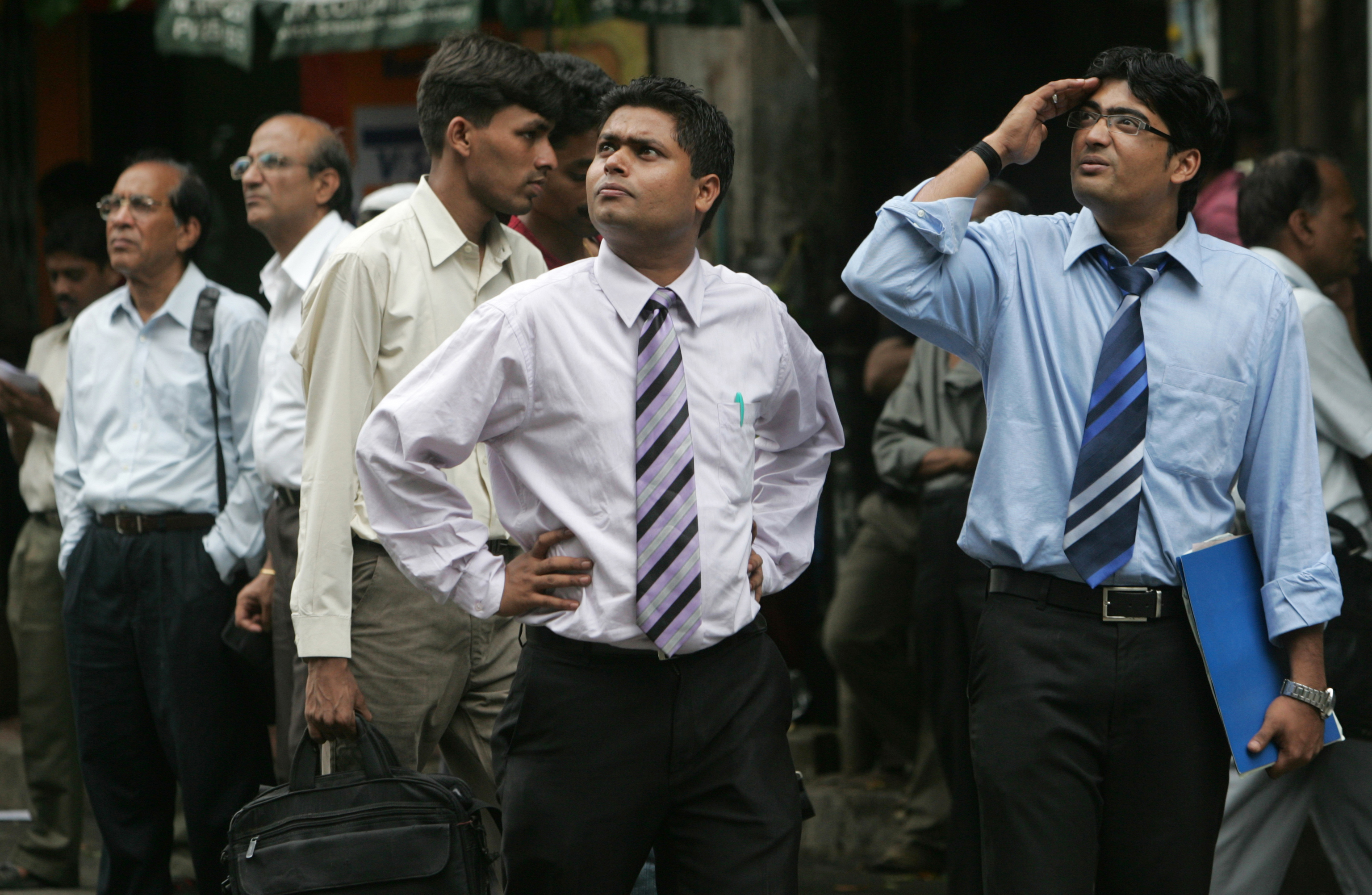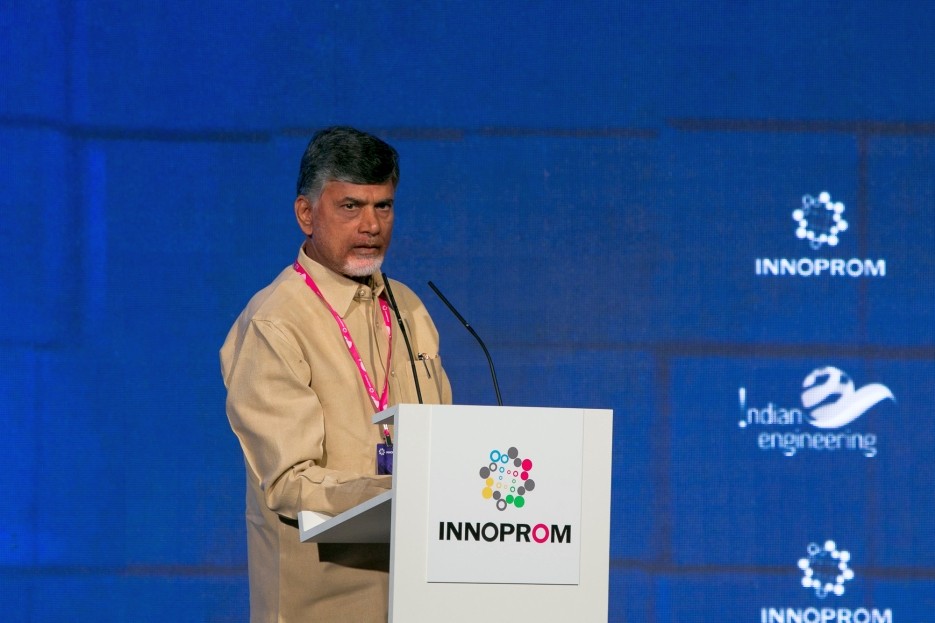How Russia and India can solve their bilateral investments dilemma

Passerby investors outside the Bombay Stock Exchange. India is hoping to attract more investment from Russia. Source: Getty Images
Bilateral investments occupy an important part of the agenda in every meeting that takes place between Russian President Vladimir Putin and Indian Prime Minister Narendra Modi. The ‘Druzhba-Dosti’ statement, released in December, 2014, after Vladimir Putin’s visit to New Delhi set the target for bilateral trade for 2020 at $30 billion and the target for mutual investments at $15 billion each way by 2025. When meeting in Goa for the 8th BRICS summit in October last year, the Russian and Indian leaders once again committed to reviewing strategies to boost bilateral trade and investment.
“Russia's cumulative investments in India amount to about $4 billion, while Indian businesses have invested twice as much in the Russian economy– about $8 billion,” Vladimir Putin said in an interview to Russian and Indian news agencies before his last visit to India. The official statistics, both in Russia and in India, however show lesser amounts of mutual investment flows.
The factsheet on FDI by India’s Department of Industrial Policy & Promotion (DIPP) shows Russia's cumulative investments in India from April 2000 to September 2015 were just over $1.18 billion placing Russia in 20th position in the list of countries investing in India, with a bare 0.40 per cent share in total FDI inflows. Statistics from Russia’s Central Bank show Russian FDI in India (including portfolio investments) have reduced significantly in the past three years. The amount of Indian FDI in Russia has also reduced from $146 million in 2014 to just $66 million by the end of 2015.
2016: A turning point
Last year emerged as a turning point in this dynamic. The number of important deals signed suggests that some significant investments could finally start flowing between two countries.
At the end of last year, Russia's state-controlled oil giant Rosneft and its partners announced the closing of a $12.9 billion deal for acquiring Essar Oil, India's second biggest private oil major, taking the inflow of Russian direct investments to India to the new level.
With several Indian oil majors acquiring stakes in Rosneft’s oilfields, India’s FDI into Russia will also increase significantly – to more than $5 billion. In October 2016, ONGC Videsh Ltd (OVL), the overseas arm of state-owned ONGC completed the acquisition of an additional 11 per cent stake in the Vankor oilfield for $930 million. OVL had previously acquired a 15 per cent stake in Vankor from Rosneft for $1.26 billion.
In another deal cleared last year, a consortium of Indian companies comprising of Oil India (OIL), Indian Oil Corporation (IOC) and Bharat PetroResources (BPRL) agreed to acquire a 23.9 per cent stake in Vankor for $2.02 billion and 29.9 per cent stake in Taas-Yuryakh oilfield in East Siberia for $1.12 billion adding another $3.14 billion to the total value of India’s direct investments in Russia.
The good news ends there. While energy emerges as the second largest area of cooperation between countries after defence, there is no significant improvement in the flow of investments from either government or private companies in non-defence and non-energy sectors despite regular hi-profile interactions, multiple meetings of the Inter-Governmental Commission on Trade, Economic, Scientific, Technological and Cultural Cooperation (IRIGC-TEC) which is the apex government-level forum aiming to review economic cooperation. Whether these mechanisms effectively include private business of all sizes in the discussion, is another question. But even if they do, experts say, interactions of businesses through platforms created and managed by the government tend to turn out to be just mere talk.
Sovereign funds not ready
The idea to channel investments, especially in sectors such as infrastructure and technology, through sovereign funds has been hyped by the Russian and Indian governments during several bilateral meets. In reality, it doesn’t seem to be working out.
Russia's example of creating the $10 billion Russian Direct Investment Fund (RDIF) in 2011 to make equity co-investments abroad and act as a catalyst for attracting FDI into Russia was later replicated by India. In 2015, India established its own $6 billion National Investment and Infrastructure Fund (NIIF) for enhancing infrastructure financing in the country.
Speaking at the second edition of the Gateway of India Dialogue held in Mumbai in February Sujoy Bose Chief Executive of NIIF noted that the need for infrastructure investments in India is estimated anywhere between $500 billion to $1 trillion in the next five years. “The government is clear that to do that foreign capital is required,” Bose said.
A few Russian companies are engaged in India’s infrastructure projects. Russian Railways is currently studying the possibility of increasing train speeds on the 575 km long Nagpur-Secunderabad route while Mosmetrostroy in a joint venture with Hindustan Construction Company Ltd is involved in the construction of underground metro in Mumbai.
However, Russia is still not a major player in India’s infrastructure sector.
Cooperation between Russian and Indian sovereign funds could lead to a much larger scale of infrastructure investments between the two countries.
During Vladimir Putin’s visit to India in October 2016 RDIF and NIIF have agreed to set up a $1 billion Russia-India Investment Fund, committing to invest up to $500 million each into the new fund. Commenting on the deal, RDIF Chief Executive Kirill Dmitriev said the fund would provide equity capital to joint Russian-Indian projects, mainly in India and address around 20 investment proposals and seek to strike its first deals in 2017.
Neither RDIF nor NIIF could comment on the present status of the proposed Russia-India Investment Fund despite multiple requests sent to them. There is also no clarity on the deals signed by RDIF with the State Bank of India, Tata Power and India’s leading infrastructure finance group IDFC in 2015.
Plans for another fund that was supposed to be set up by NIIF with Russia’s state-run Rusnano for investing in high-tech projects in India (the agreement was signed during Narendra Modi’s visit in Moscow in December 2015) did not materialize.
“The work on the project was suspended. Unfortunately, the documents for setting up the fund were not signed and the funding of the project was not carried out,” a Rusnano spokesperson told RIR in an emailed reply. He noted, however, that Rusnano is still interested in India and is ready to consider alternative options for cooperating with sovereign funds to enable mutual technology transfers and finance joint projects.
Risks and fears
Sergey Drobyshevsky, Scientific Director at the Gaidar Institute for Economic Policy, believes Russian businesses and banks are not likely to be ready to invest in India in the nearest future as the prospects of much-needed investments within Russia seem clearer. “For Russian companies, India is rather a prospective market for exports as well as the destination for financial resources that are least affected by the sanctions,” he added.
The increasing in number of Russian business delegations coming to India in search for a new export market supports this argument. However, India is also looking at increasing exports. Pushing the Make in India program, New Delhi is now interested in attracting foreign investments in joint venture projects rather than simply importing equipment and parts.
There are fundamental reasons for low investments between countries, too, says Andrei Volodin, Chief Researcher at the Primakov National Research Institute of World Economy and International Relations (IMEMO), Russian Academy of Sciences.
“First, our countries have no common borders. If the North South Transport Corridor (NSTC) will take shape, businesses of both countries will get more incentives for mutual investments,” Volodin told RIR. “Secondly, the investment potential of Indian companies is far behind that of Western investors. As for Russian businesses, while they currently lack financial resources for investing abroad, they also lack a certain economic and political culture and, let me put it this way, the sharpness of geopolitical vision.”
According to Volodin, the so-called MTS case (the investments of AFK Sistema in India were hit hard in 2012 when Indian Supreme Court revoked 122 telecom licences, including 21 licences of Sistema’s subsidiary SSTL) had a great impact on Russian businesses.
Indian red tape
Bureaucratic hurdles and red tape are seen as the main obstacles for Russian investors in India, experts interviewed by RIR believe.
“Russian investors are not ready to think that they are losing a huge market in India as officially the middle class size numbers 300 million while the conditions for doing business in this country are quite tough,” Volodin says. “Yes, there are public announcements of measures for ease of business and de-regulation, but many old regulations still exist.”
Maxim Chereshnev, Chairman of the Russian Trade & Economic Development Council of Russia, agrees. “Unfortunately, India is famous for the red tape and corruption that businesses face, and this negatively affects its international image as an investment destination,” he told RIR.
Chereshnev noted, however, that the measures that India has been taking against corruption and bureaucratic hurdles helped the country move from the 142nd to 130th position in the World Bank’s 2017 'Ease of Doing Business’ ranking. This coupled with lifting of FDI caps in many sectors, the availability of relatively cheap labour, a young population and the enormous potential of the domestic market makes India attractive for investors. Such factors are also helping to generate a greater amount of interest towards India in the Russian business community, he added.
Ksenia Kondratieva is an independent journalist based in Mumbai covering business, economic reforms and development, and international relations.
If using any of Russia Beyond's content, partly or in full, always provide an active hyperlink to the original material.
Subscribe
to our newsletter!
Get the week's best stories straight to your inbox



